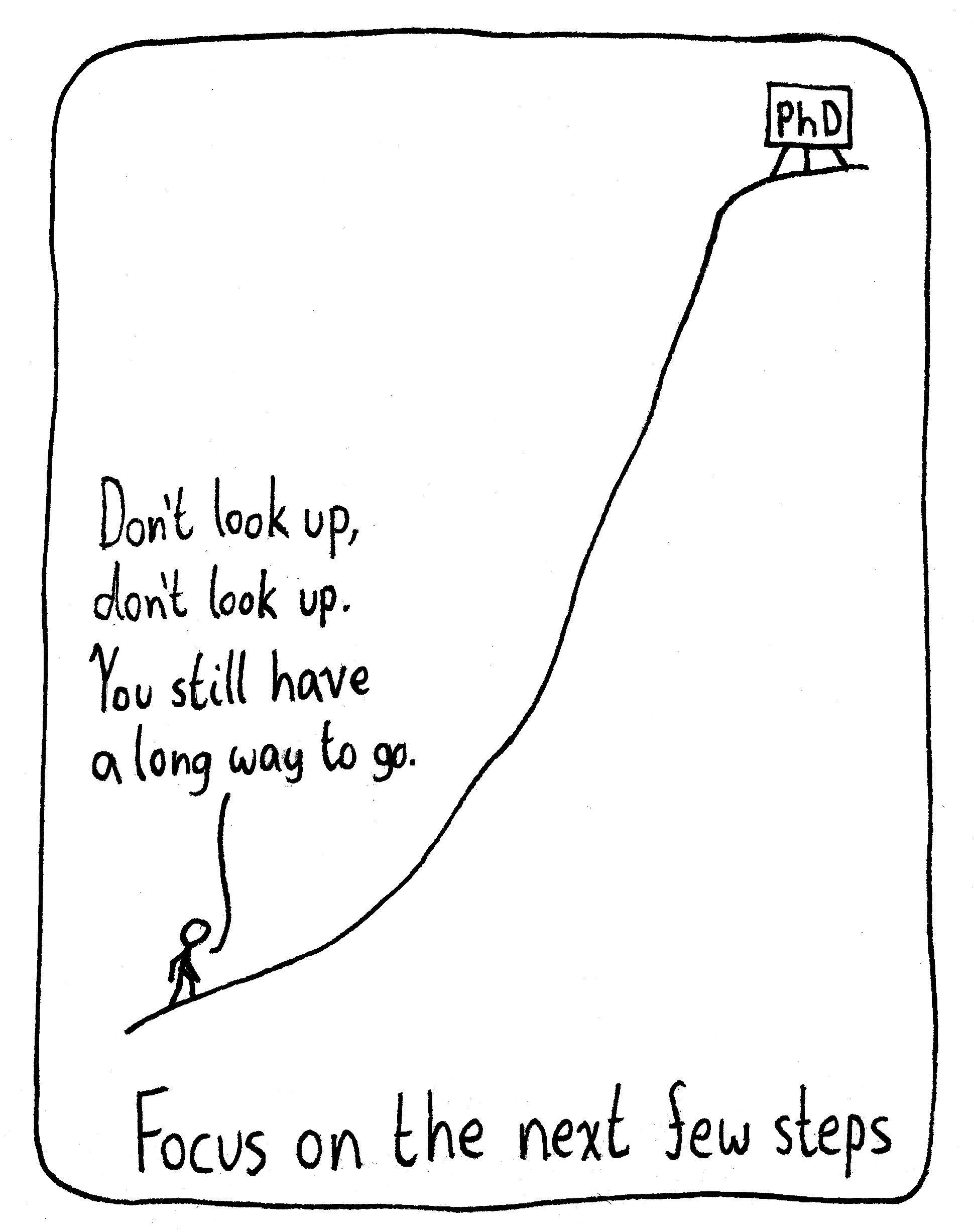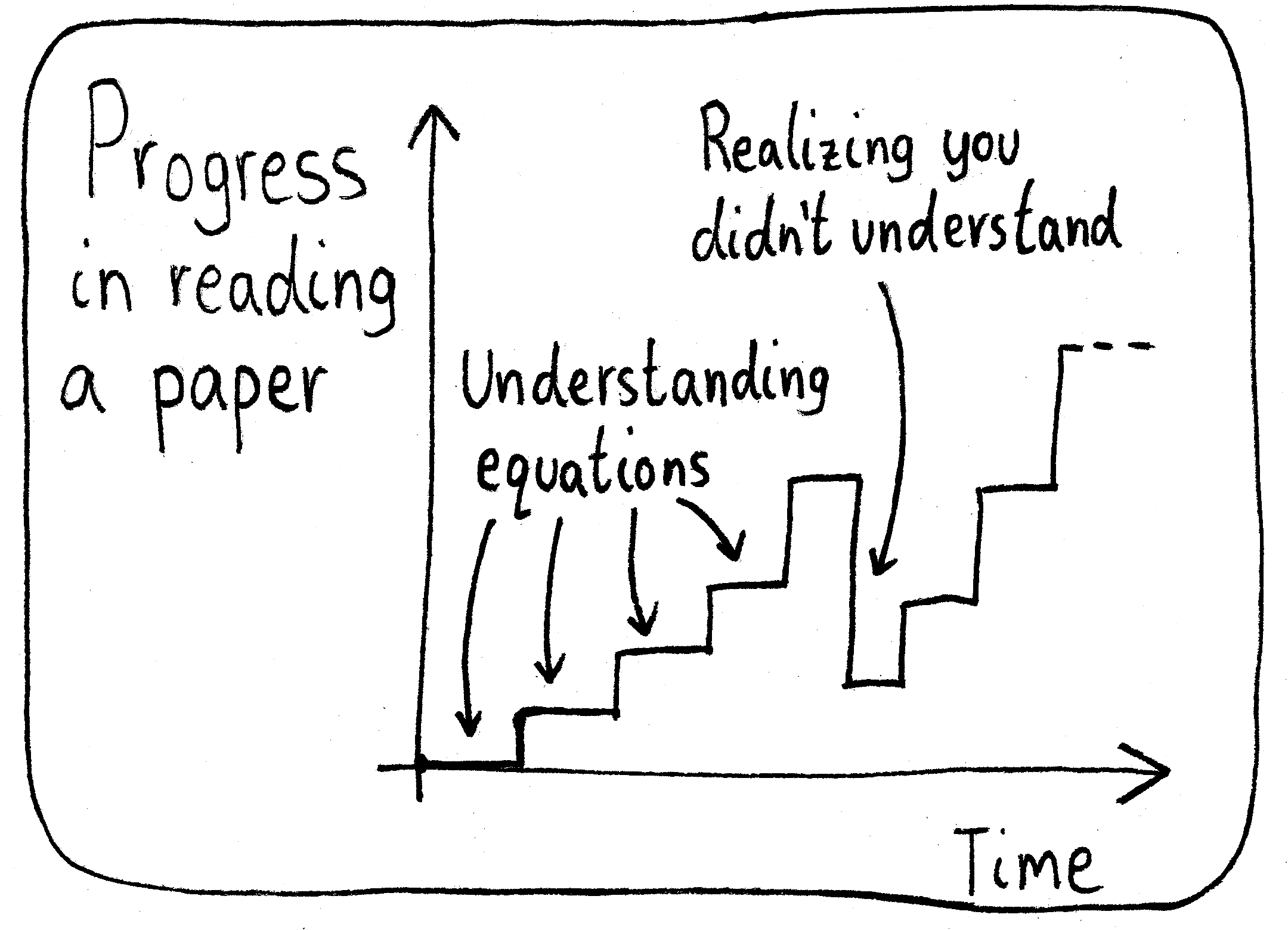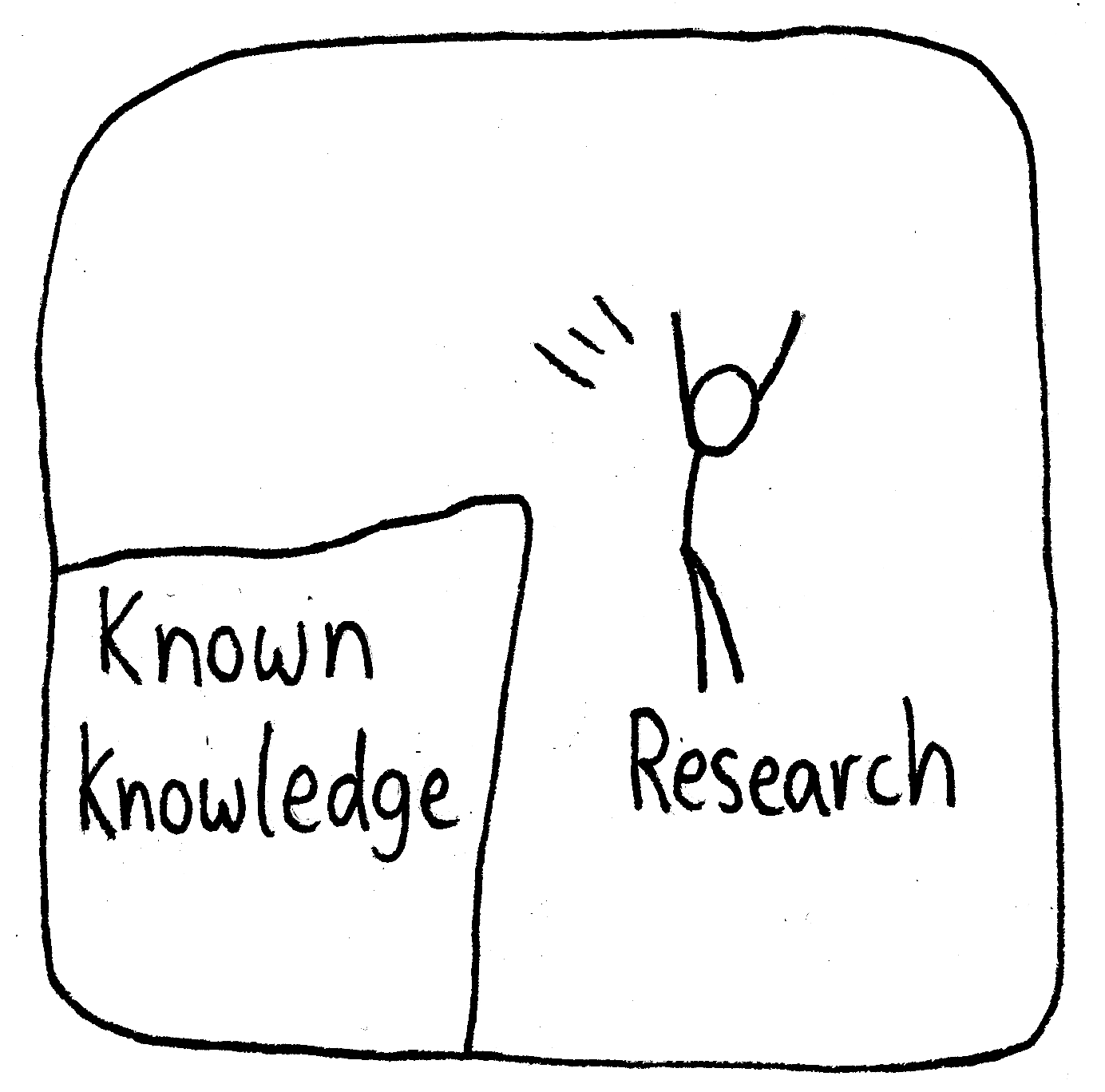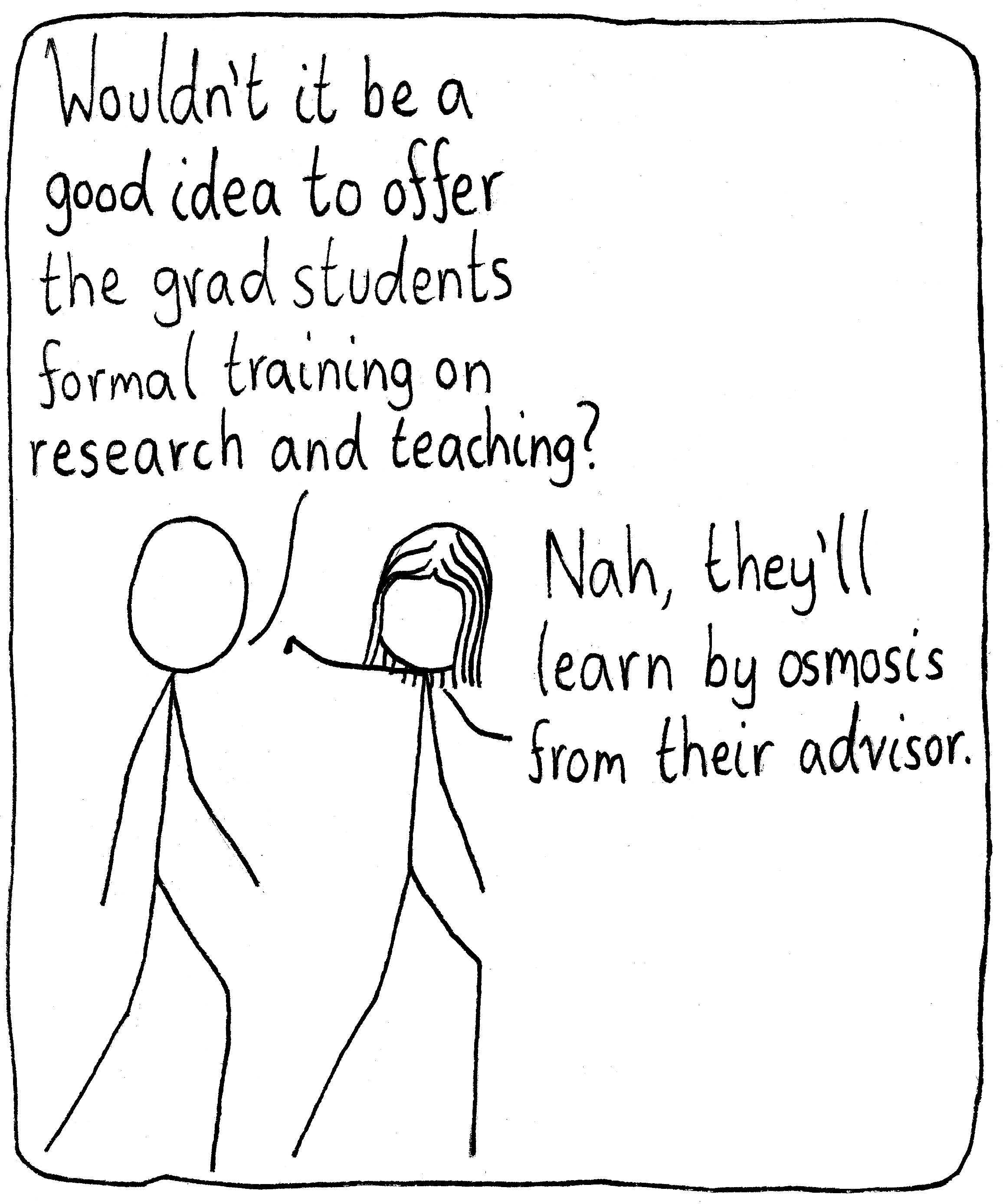 Comics about mathematics, science, and the student life.
Comics about mathematics, science, and the student life.
Brick Walls

Going for big impact is great, but it’s nice to at least have something to switch your mind to when you’re stuck.
16 Nov 2022Explicit
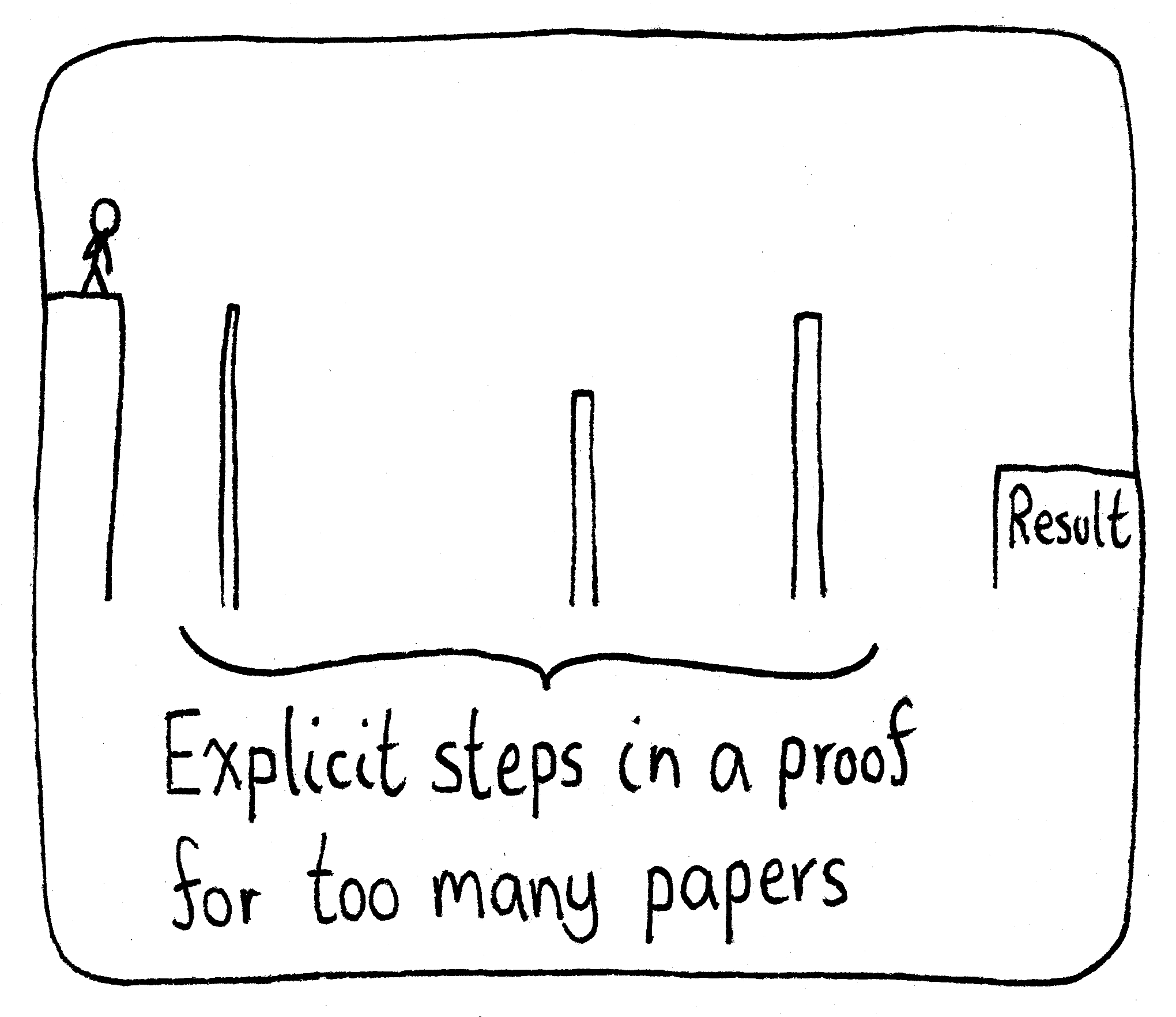
It’s almost as if the researchers have spent so long looking at this problem that they’ve internalized all of its difficulty for new readers…
14 Nov 2022Advocate

So this is why my family and friends look at me in horror and confusion when I insist on explaining them a proof or concept from my research that probably requires huge amounts of background study.
11 Nov 2022Out of Proportion

“Professor? Could you maybe use a few more equal signs?”
“Oh, the equality is easy. I’ll let you fill in the details after class.”
31 Oct 2022Easy Answers
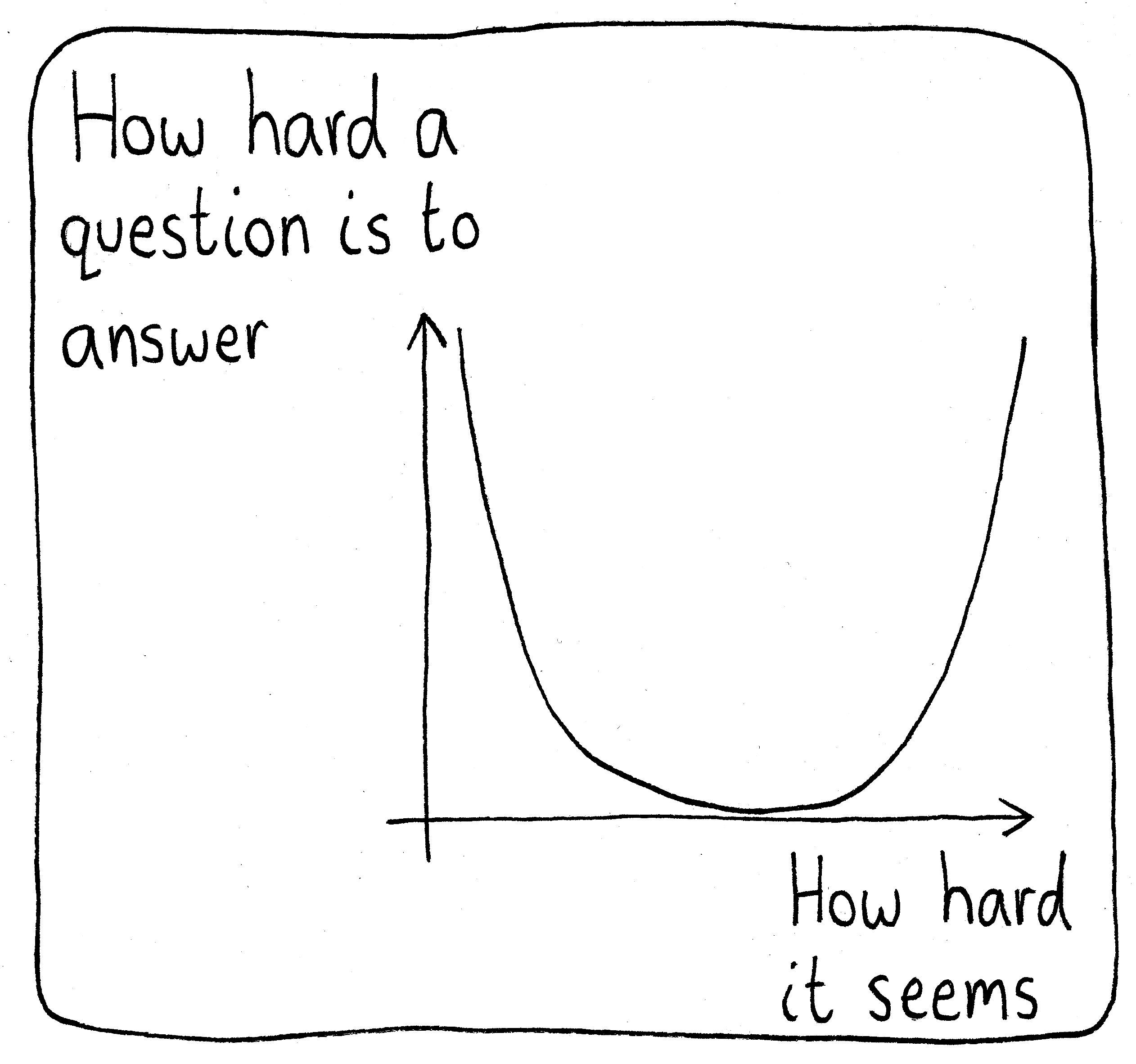
Academia is really good at finding the minimum of this function, though I would argue the easy-sounding questions are the ones we want to dig deeper on.
28 Oct 2022
